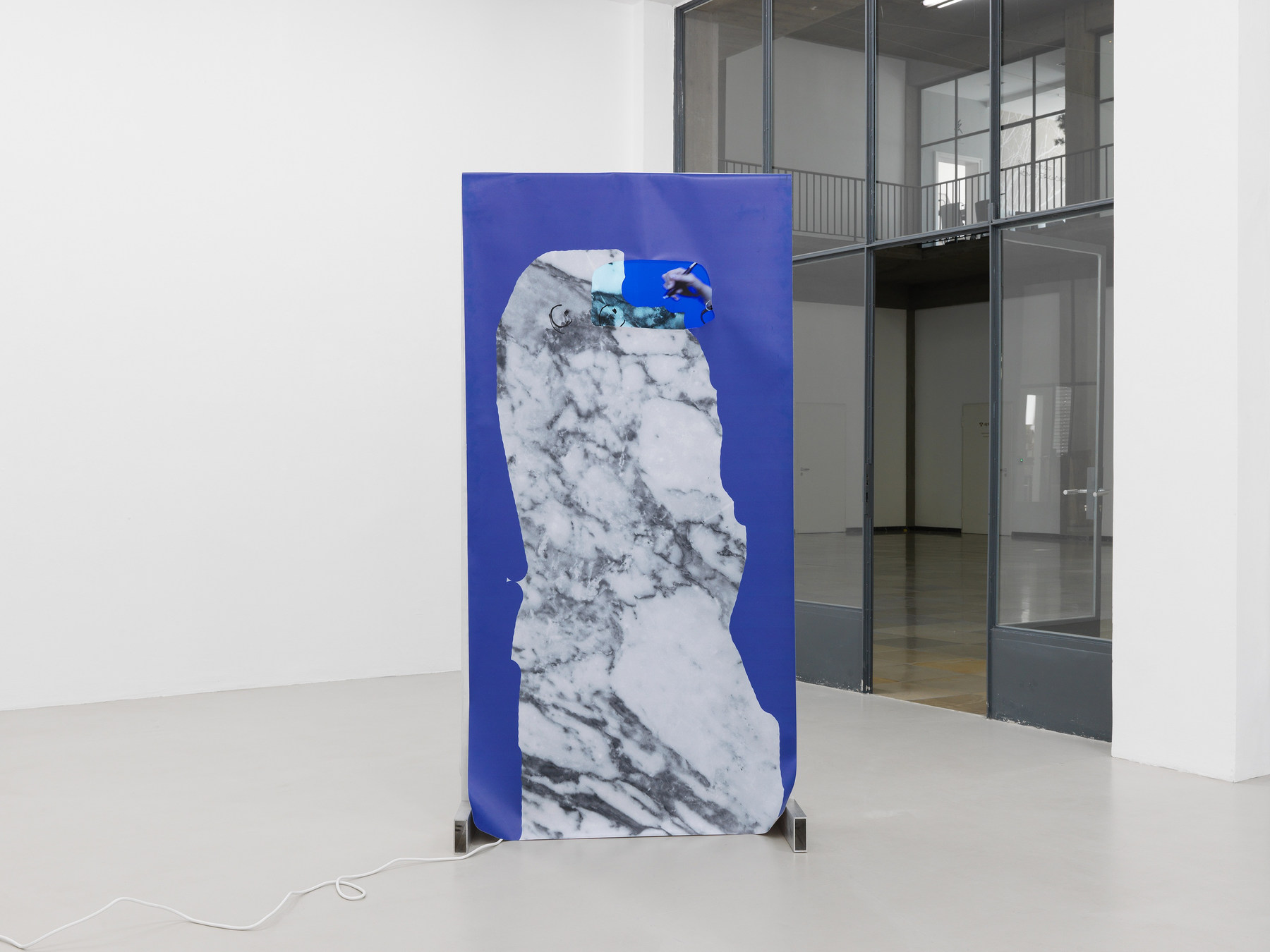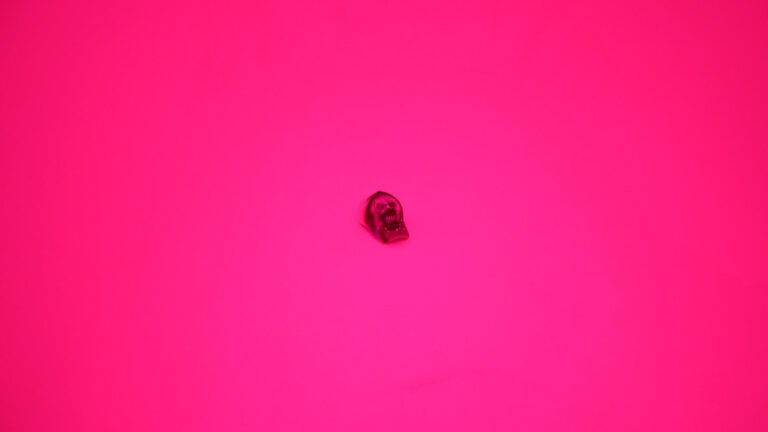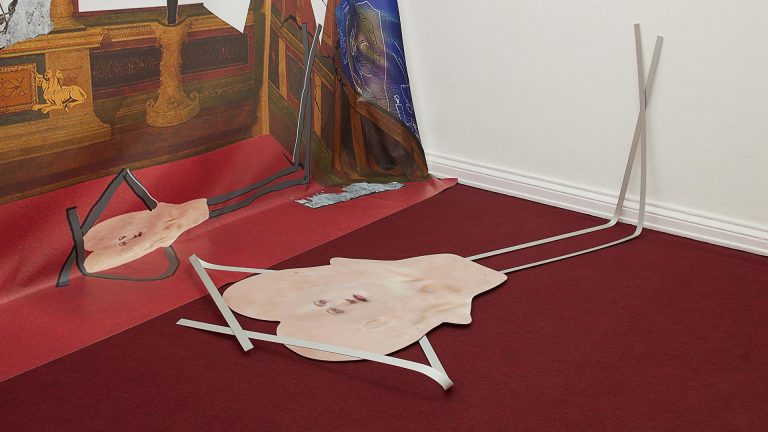Artist: Catherine Biocca
Exhibition title: BONSAI FEELING
Venue: Kunstverein Nürnberg, Nürnberg, Germany
Date: June 3 – August 6, 2017
Photography: Annette Kradisch, all images copyright and courtesy of the artist and Kunstverein Nürnberg
The Kunstverein Nürnberg is pleased to announce the first comprehensive solo exhibition in Germany by Catherine Biocca (*1984, Rome; lives in Amsterdam and Berlin).
Under the title BONSAI FEELING, Catherine Biocca presents at the Kunstverein Nürnberg new and existing works that examine the various meta-levels of the human experience of reality. With the term “bonsai”, a Japanese variation of East Asian garden art, Biocca makes reference to a piece of artificial nature that is shaped through acts of intervention into the miniaturized, ideal form of a tree. The cultivation of the bonsai plant does not follow a natural, organic growth pattern, but instead takes as its template the representation of trees from traditional Japanese and Chinese art. In her exhibition, Biocca links this production of high artificiality and control with current perceptions of human communication, in which reality, given digital progress and the development of media, is often indistinguishable from the “fake”, from provocation and speculation. Her short animated films and their presentation in the space focus on the physical and psychological state of exhaustion, which is evident in their forced, often alarming action sequences. At the same time, the overwrought undertakings by the acting figures indicate the possibility of an outbreak or cathartic impulse, in order to contemplate a restructuring or reorganization of the future.
In the interior hall of the Milchhof building, Biocca presents her new installation Stockholm (2017), which engages directly with the New Objectivity architecture that surrounds it. In contrast to her other works, this sculptural arrangement is not animated with the help of video clips, but through speech bubbles on transparent PVC foil. The fusion of two- and three-dimensionality establishes a temporal situation that functions like a freeze frame taken from a comic film. The monumental atrium, which connects the building’s different floors with their offices, commercial areas and exhibition spaces, is mirrored by the formation of a miniature fictional landscape. Small caves and hiding places, similar to those used in aquariums, are situated around a water hole where menacing sharks swim in its depths. The speech bubbles associated with the miniature dwellings enliven the scene by addressing the possible or future activities of hidden characters. The conversation focuses on the consideration and denial of, as well as recovery from required work processes. Here, the nature of labour is contrasted with that of amusement and distraction, which are nevertheless all equally associated with risk, due to the presence of the predatory fish.
The use of stylistic devices from comics and cartoons, which can portray violent acts while exposing them as fiction, are based on Biocca’s observations of Internet culture, childhood memories of Japanese manga series from the 1980s as well as her research into select art historical topics. Biocca links her research with the emotion of schadenfreude, a negative form of humour often used in literature and film as a means of comic relief. As the experience of pleasure in misfortune, this brings short-term relief from tension or existential fears. The act of perceiving and understanding aggression, which can change suddenly into liberating comedy, is also the topic of Blushing Sculptures (2015) in the large gallery hall. The video screens, which are integrated into printed marble blocks on PVC foil, depict stonemasonry performed using a variety of hand tools. Sounds of yelling and pain transform the marble blocks into creatures attempting to defend themselves against the operations by making themselves audibly noticeable.
By addressing the invasive aspect of the sculptural process, Biocca provides another image of exhaustion and powerlessness that reflects the excessive generation of images in contemporary art, in social networks and on information platforms, as well as the exploitation of natural resources. The symbolic power of this artistic work also recalls the wanton devastation of cultural heritage, sculptures and monuments during armed conflicts, in which they stand surrogate for real people and their cultural identity. In Biocca’s work, the destruction and reconstruction of matter and bodies are shown to be a reciprocal process, which, by exposing the creation of brutality by the media and disarming it through humour, brings to light its utter absurdity and senselessness.
In contemplating society’s approach to violence, she critically questions both the desire for entertainment as well as our capacity for empathy. In the installation Mr. President’s Run (2017), a video projection animates a comic figure running down the road, who reminds us of a battered version of SpongeBob, the sea sponge from the American animated series of the same name. The figure comments incessantly on its own tardiness, while desperately running against time. The sense of despair turns into a kind of tragicomedy, as the true reason for the time pressure remains unknown. Trapped in an endless loop, the scene illustrates a moment in which comedy becomes critique, and offers a parable for a society that promises the individual social advancement through motivation and increased productivity. Algae and water plants made of plastic are used in the installation to indicate landscape elements. These artificial imitations of nature underscore how, through means of technical and digital copying, things that were once barely affordable and considered privileged acquisitions have now become suitable for mass consumption and thereby interchangeable.
In further new works, such as Full Time Tragedy (2016), Animated Flag (2016) and 100 Better Ways to Die (2015-2017), Biocca’s characters endeavour to find through their actions an appropriate approach to their surrounding world, which seems to be threatened by diverse encroachments and attacks.
Catherine Biocca’s works evince the arduous search for one’s identity as an ongoing process of maintaining the balance between competition and accord in relation to others.
Catherine Biocca (b. 1984 in Rome, Italy) lives in Amsterdam and Berlin. She studied political science in Rome before she changed at the Kunstakademie Düsseldorf in the class of Georg Herold, where she completed with a degree as master student in 2013. Shortly afterwards she was an artist in residence at the Rijksakademie van Beeldende kunsten in Amsterdam from 2014 to 2015. Catherine Biocca has participated in numerous international group exhibitions, as e.g. in Meeting 1, on display, BASIS, Frankfurt a. Main; at The 3rd Shenzhen Independent Animation Biennale, Shenzhen (2016) and in Dejima. Concepts of In- and Exclusion, GAK Gesellschaft für aktuelle Kunst, Bremen (2017). Furthermore she presented her works in solo exhibitions as The Fear of Killing / Fear of Being Killed at Le Foyer, Zurich (2016); Judge Judy Judas at PIK – project space at the Kunstwerk, Cologne and SS / SAD SYMPHONY at Frutta Gallery, Rome (both 2017). Amongst her important awards is the STRABAG Artaward International 2015 and the Hans Purrmann-Prize (Förderpreis) 2017. Since 2016 Catherine Biocca is running the project space JollyJoker in Amsterdam in collaboration with Lisa Reitmeier and Benedikt Hipp.
Catherine Biocca, BONSAI FEELING, 2017, installation view, Kunstverein Nürnberg
Catherine Biocca, BONSAI FEELING, 2017, installation view, Kunstverein Nürnberg
Catherine Biocca, BLUSHING SCULPTURES No. 1 & No. 2, 2015
Catherine Biocca, BLUSHING SCULPTURES No. 1 & No. 2, 2015
Catherine Biocca, FULL TIME TRAGEDY, 2016
Catherine Biocca, FULL TIME TRAGEDY, 2016 (Film Still)
Catherine Biocca, BONSAI FEELING, 2017, installation view, Kunstverein Nürnberg
Catherine Biocca, BLUSHING SCULPTURES No. 1, 2015
Catherine Biocca, STOCKHOLM, 2017
Catherine Biocca, STOCKHOLM, 2017
Catherine Biocca, STOCKHOLM, 2017
Catherine Biocca, MR. PRESIDENT’S RUN, 2017
Catherine Biocca, MR. PRESIDENT’S RUN, 2017
Catherine Biocca, MR. PRESIDENT’S RUN, 2017 (detail)
Catherine Biocca, MR. PRESIDENT’S RUN, 2017 (Film still)
Catherine Biocca, BONSAI FEELING, 2017, installation view, Kunstverein Nürnberg
Catherine Biocca, BONSAI FEELING, 2017, installation view, Kunstverein Nürnberg
Catherine Biocca, STOCKHOLM, 2017
























